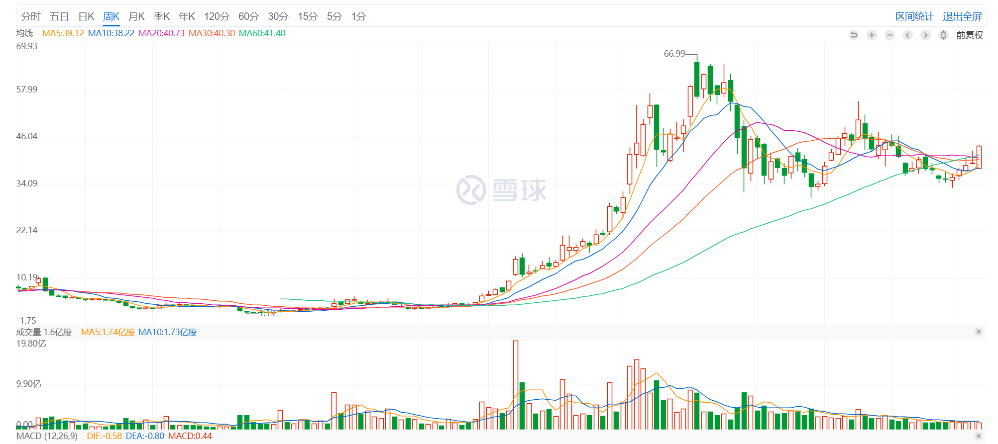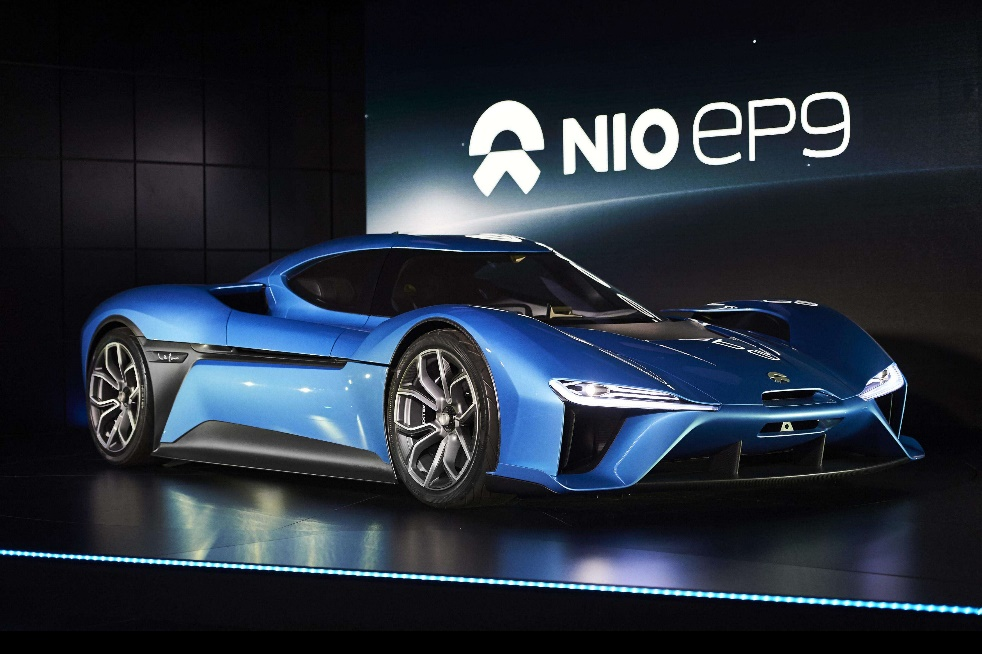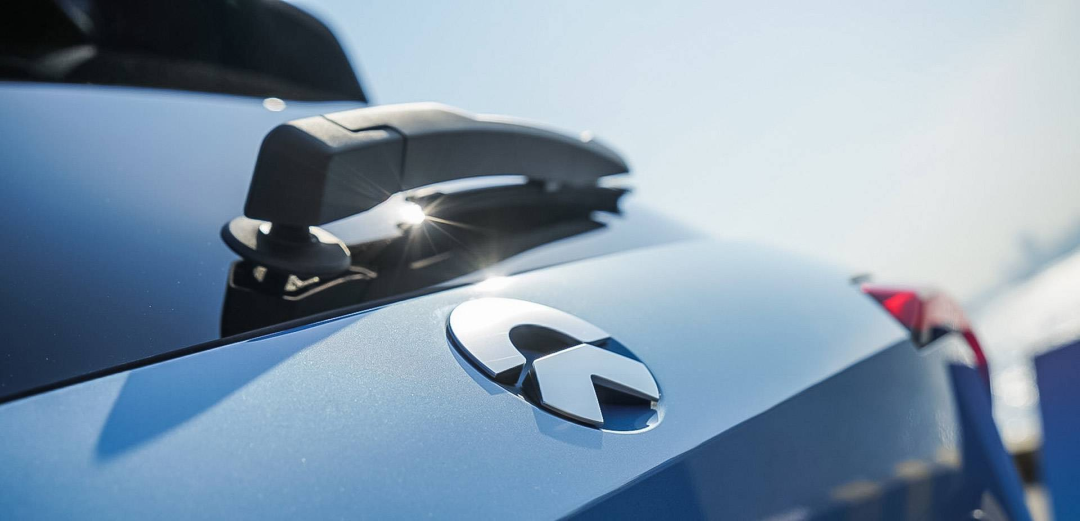*This article is reproduced from the autocarweekly WeChat account.
Author: Financial Street Lao Li
Whether in industry or capital, many people don’t understand NIO, but please believe that this is a magical company.
In the first week of every month, the sales of new car manufacturers directly affect the secondary market. NIO adjusted its production line in October and delivered only 3667 vehicles, falling behind both Ideal and XPeng, as well as other new forces. Its popularity and controversy soared in various industry communication groups. Interestingly, after NIO’s stock slightly fell due to the low sales, institutions quickly seized the opportunity to increase their positions, with the largest increase in the past week reaching over 10% at one point.

In fact, when the Q3 market focused on A shares, some researchers of top companies were secretly studying the US stock market, specifically, studying NIO. In Lao Li’s memory, the last time everyone studied NIO together was in Q3 last year. Soon after, NIO caused a crazy storm of market value surge.
This temporal and spatial mismatch reflects the truth of the capital market, always standing on the opposite side of the crowd. Today, Lao Li will chat with you about NIO. In the vast capital market, why only a few can understand NIO? What is the market value code of NIO? Can NIO get on the bandwagon in the booming A-share market?
Who can understand NIO?
The secondary market can guide people, but can also mislead them. Many friends say that the market value is the most authentic reflection of a company’s development, which Lao Li thinks is both correct and incorrect. In a relatively objective and fair market, the market value is the real reflection of a company’s development. Companies tend to have good market value performance during periods of high ROE (return on equity). But in a relatively paranoid market environment, the market value is not the real reflection of a company’s development.
The market value performance of the same company in the mainland market, Hong Kong market, and US market occasionally shows conflicting trends, which is essentially because the market environment is different. Overseas markets often have wrong judgments on Chinese companies, and NIO is a typical example. Whether in industry or capital, only a few understand NIO, but these few have made a lot of money in the past two years. Even when the leaders of the Hefei government mentioned NIO, they bluntly said that they had made a big profit.

Some of these people who made a fortune truly understood NIO, while others believed in Li Bin and dared to buy it.Since 2013, Mr. Li has had several close encounters with Li Bin at Yiche. At that time, only a few people knew that the boss wanted to start an electric car company and had a clear path for it. Now it seems that Li Bin is always ahead of the curve in laying out the company’s business, but not everyone is a strategist and it’s normal not to understand.
There are also industry investors and friends who choose to believe in Li Bin’s personal wisdom. NIO is the most luxurious investment lineup among China’s new car-making forces. When NIO was still on PPT, investors didn’t hesitate to invest because Li Bin had founded two listed companies, Yiche and Yixin.
Frontline employees also choose to believe in Li Bin. In 2019, when NIO was in its most difficult time, many of Li’s friends, both middle and low-level employees at NIO, often said, “The boss has many business models, and NIO won’t fall so easily.”
These investors and users who believe in NIO have benefited from the increase in market value. One of Li’s private equity fund friends bought a large amount of NIO stock when it hit its lowest point. The friend’s thinking was simple: from a fundamental perspective, NIO is a very promising startup company with a longer break-even cycle by virtue of being an automotive enterprise, and its business model belongs to the “long cycle, high net worth” category. Patience is more important than waiting, and Li feels he understands NIO.
Some buyers and sellers in China are very optimistic about NIO. For the past two years, Li believes that almost all of the pan-automobile funds have looked at NIO. However, because many domestic institutional funds cannot reach the United States, and the domestic secondary market has performed well in the past six months, many friends can only wait.
In the overseas market, major U.S. institutions are also paying attention to NIO. Recently, even reports of certain top American funds’ valuations of NIO have been circulating in the industry. Every time a top fund pays attention to NIO, the start of the market’s rise is not far off.
Since NIO’s listing, its market value has never been affected by external voices. When it first went public, the market was booming, and many friends bought NIO shares and announced that they would grow together with the company. When its market value was bottoming out, the market was pessimistic, as if NIO would go bankrupt tomorrow. When its market value soared, the market cheered and applauded. Currently, NIO is going through a phase of market value adjustment, and the market is buzzing. Li predicts that when NIO’s stock price rises around the beginning of the year, the market will again praise NIO.Historical experience in the US stock market shows that the more potential a company has to become a leading player, the noisier the market will be due to increased hype. For researchers, the noise in the market is not important when it comes to a company they have long-term confidence in. What’s important is whether the company’s founder is a great strategist, whether its business is on a long-term track, and whether its finances show consistent growth. Lao Li thinks that NIO is such a company.
What is the valuation password for NIO?
Many people think that they understand NIO and have seen through it, but this is not necessarily true. For example, questions about production capacity, suppliers, financial performance over the past three years, and the technologies and models that might be launched in the next three years, have been asked by Lao Li to over 10 friends who were unable to answer them. Lao Li believes that:
Firstly, whether the company’s founder is a great strategist.
The answer is unequivocal. From an external perspective, Li Bin founded three listed companies, including Yiche, Yixin, and NIO, which is a rare achievement among entrepreneurs worldwide. From an internal perspective, Li Bin’s strategies of Yiche, Yixin, and NIO are closely linked. As early as the Yiche period, Li Bin had begun to lay out the automotive aftermarket industry, from used cars to e-commerce to automotive finance, not missing a trick.

Back then, every Monday, Li Bin would discuss strategies for Yiche with Shao Jingning and for Yixin with Zhang Xuanan at New Century Nikko Hotel (the former headquarters of Yiche). Lao Li believes that the fundamental reason why Li Bin founded NIO was that the imagination space of Yiche and Yixin was too small, and Li Bin wanted to start a larger business from scratch. Not all entrepreneurs have such courage and strategic vision to start from scratch. If people regard NIO as a typical automotive company, they are clearly understanding NIO the wrong way.
Apart from strategic vision, company control is also necessary. From a shareholding perspective, as of February 28, 2021, Li Bin was the largest shareholder of NIO with 10.6% of the shares, Tencent was the second-largest shareholder with 10%. Due to the three series of stocks, Li Bin has 39.3% of NIO’s voting rights, which is the foundation of the company’s development.

Second, whether the company’s business is on a long-term track.
The sustainability of the smart electric vehicle track has been proven in the Chinese and American markets this year, as well as breaking the lies of “Citron Research,” a well-known short-selling organization, shorting NIO.- Tesla has failed to stop NIO, but its sales are getting better, and the claim that its valuation is too high is groundless.
- Electric cars are not only the best way for China’s auto industry to transform, but also a good way for the global auto industry to transform. This is a long-term process.
- Early speculators in NIO have mostly left, which has improved the investment quality of NIO.
- The third factor is whether the company’s finances are stable and improving.
Careful analysis of the finances of Tesla, NIO, XPeng, and Li Auto shows the commonality mentioned by Lao Li: the breakeven cycle is long, but the revenue and net profit of each company are constantly increasing. Lao Li mentioned the relevant situation of the NIO Q2 report in “NIO unveils new product, Li Bin is too skilled” (link to article).
Unlike the volatility of its market value, NIO’s main financial indicators have been steadily rising in the past three years, with the company’s revenue, expense ratio, and net profit all within the reasonable range recognized by the capital markets. The growth rate of some indicators is higher than expected. Despite Q3 financial report not yet published, top domestic brokerages have given “buy” or “hold” ratings to buyers in September and October.
Since its establishment, NIO’s profitability has been growing. In Q1 of this year, the gross profit margin was 19.5%, and in Q2 it was 18.6%. Lao Li predicts that NIO’s gross profit margin this year will stabilize at around 19%, entering the range of indicators of a stable automobile company. Regarding expenses, it is expected that the sales and management expense ratios for this and next year will be 15% and 10%, respectively, and the R&D expense ratio will be 12% and 10%, respectively. Next year, with the full release of the ET7, the gross profit margin will continue to rise and is expected to be maintained at 25% or even higher, surpassing traditional automakers and not far behind Tesla.
NIO will soon release its Q3 report, and Lao Li will not delve too deeply into the finances here. After the Q3 report is released, Lao Li will talk separately with everyone about the finances of NIO and several new forces, and based on the company’s strategy, track and financial situation, Lao Li believes that NIO, with a market value of over $60 billion, is still undervalued.
Wait or get on board?
Recently, many people in the industry have been discussing NIO’s poor sales in October. NIO officials have also made relevant explanations, saying that production lines were adjusted, and the Hefei factory only worked for 10 days in October. If calculated three times, NIO’s sales in October will exceed 10,000. It is understood that NIO’s orders in October have not decreased, but have increased. What is even more interesting is that on the day the news was announced, NIO’s stock opened low and then rose, and has been rising slowly since October this year.## Translation
Tech-savvy friends may say that NIO has formed a double-bottom structure and is bound to rise. However, for Mr. Li, more importantly, many top institutions have been studying NIO’s “new business model” since August and September this year. In October, a leading overseas institution estimated the value of NIO to be $80 billion, while a domestic institution also gave an estimate of $70-80 billion. Funds have been buying into the market, laying out for next year.
As for next year’s market, Mr. Li is very confident in NIO, XPeng, and Ideal. However, the three companies have different models. NIO is a new business model, XPeng is an economic product increment, and Ideal is a pure electric product expectation. Among these three companies, Mr. Li prefers NIO because neither the incremental business nor the new product expectations of these companies have good sustainability as the new business model.
What is NIO’s new business model? Many people in the industry talk about it, but it is very complicated. In fact, NIO’s profit model can be simplified into three parts: the first is hardware profit, simply selling cars, competing for revenue and gross profit margin, which is the main source of current profit. The second is software value-added services, which compete for user purchasing power. And the third is vehicle ecological services, which compete for service quality.
Some friends may say that now all smart electric vehicle companies on the market are promoting these services. Mr. Li believes that in China, only NIO has the potential to achieve these new profit models.
Let’s first look at hardware profit. In this field, everyone’s ability is about the same. After NIO launched NT2.0 platform models, the gross profit margin was only 25% or even a little better, while Tesla was just 30%. The imagination is so big, can earn money by relying on hardware profit, but without imagination.
Secondly, software value-added services. Everyone knows that software service has a high gross profit margin, and every company can do it. However, not every company can profit in this sector. Tesla’s FSD has a low installation rate in China, and Chinese users’ purchasing power is not as strong as imagined. The core of software value-added services is to capture the most financially robust group of people, and NIO has captured this group of people. In Q2 2021, the selection rate of NIO Pilot (including the selection package) exceeded 80%. If the ET7 adopts the NAD subscription charging mode, a new profit point will open up.In the eyes of the capital market, NIO’s customers are the “high-net-worth” population in China, and as long as they can bring good services, payment ability is never a problem. Imagine asking an owner of a 200,000 RMB economical electric vehicle to spend 30,000 RMB annually on software value-added services, which is obviously unrealistic, but NIO’s users can. Old Li often jokes that even if the pricing of NIO’s vehicles reaches 500,000 RMB, they still won’t have trouble with sales.

Lastly, there is the vehicle ecology service, the most typical of which is NIO Power. Starting from last year, many researchers have been studying why Li Bin spent so much money deploying NIO Power. At present, it seems difficult for NIO Power to make profits except for serving users. In fact, Old Li also had this doubt. However, over the past year, many researchers began to slowly understand the significance of NIO Power, and everyone finally understood the strategy behind it. If there is a chance, Old Li will talk to everyone in detail about NIO Power from a capital perspective. In summary, NIO Power is the foundation for NIO Automotive to move from a $100 billion to $300 billion or even higher company in the future.
Whether it is industry research or enterprise research, in the end, it is all about the strategy, and how to profit from the market or users. Li Bin’s brilliance lies in combining strategy with user service, which is a long-term and correct path. Finally, Old Li shares a personal opinion, that is, if you want to earn quick money, buy A shares; if you want to earn big money, buy NIO.
This article is a translation by ChatGPT of a Chinese report from 42HOW. If you have any questions about it, please email bd@42how.com.
